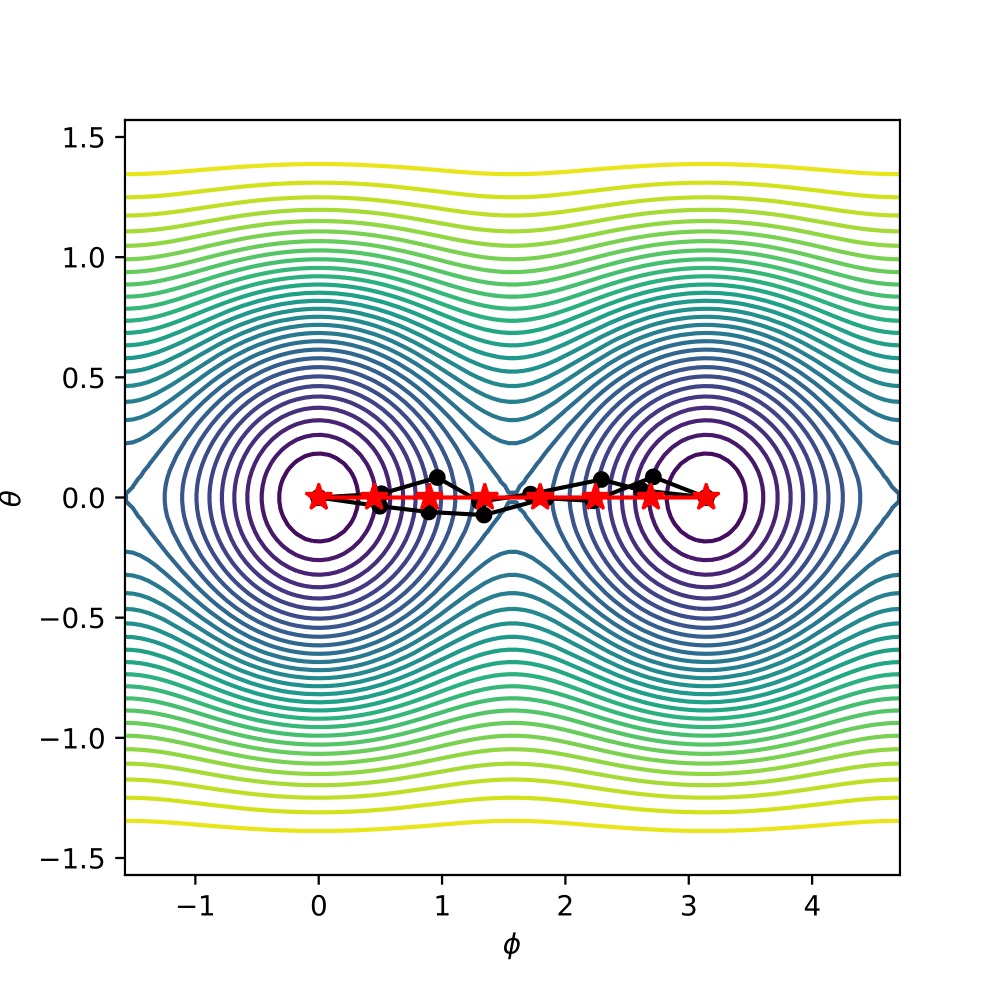NANOSYSTEMS: PHYSICS, CHEMISTRY, MATHEMATICS, 2020, 11 (6), P. 642–650
Machine learning method for computation of optimal transitions in magnetic nanosystems
K. R. Bushuev – ITMO University, Kronverkskiy, 49, Saint Petersburg, 197101, Russia
I. S. Lobanov – ITMO University, Kronverkskiy, 49, Saint Petersburg, 197101; Saint Petersburg State University, Saint Petersburg, 198504, Russia; lobanov.igor@gmail.com
Minimum energy path (MEP) is an important tool for computation of activation barriers and transition rates for magnetic systems. Recently, new methods for numeric computation of MEP were proposed based on conjugate gradient and L-BFGS methods [1] significantly improved convergence rate compared to nudged elastic band (NEB) method. Due to lack of strict mathematical theory for MEP optimization other more effective methods are expected to exist. In this article, we propose a machine learning based approach to search for MEP computation methods. We reformulate the NEB method as a differentiable transformation in the space of all paths parametrized by a family of metaparameters. Using rate of convergence as the loss function, we train NEB optimizer to find optimal metaparameters. This meta learning technique can be the basis for deriving new optimization methods for computing MEP and other non-classical optimization problems.
Keywords: Transition state, minimum energy path, machine learning, meta learning.
PACS 75.10.Hk, 75.75.-c, 82.20.Pm, 07.05.Mh
DOI 10.17586/2220-8054-2020-11-6-642-650
